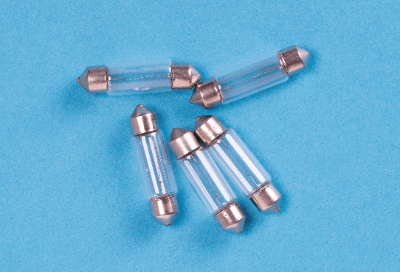What Is a Glass Fuse?

A glass fuse is a type of fuse that utilizes glass as a protective tube. They are the most common type of tube fuses. These fuses interrupt current flow by melting the element when an overrated current flows through them, preventing circuit breakage, smoking, ignition, and similar accidents.
Uses of Glass Fuses
Glass fuses are widely used in various applications:
- Control power supplies in motor control center units.
- Overcurrent protection for power lamps and instrument transformers.
- Protection for in-vehicle and motorcycle control units.
- On printed circuit boards of home appliances.
- On control boards of industrial rectifiers.
They are most often used in control circuits due to their compact and space-saving nature, operating faster than general breakers.
Principle of Glass Fuses
Glass fuses consist of a glass tube, an element, and a cap.
1. Glass Capillary
The glass capillary protects the filament. Most often made from PC glass, it allows for visual inspection to see if the filament has fused. Some glass fuses also contain an arc-quenching agent like silica sand to suppress arc generation when the filament breaks.
2. Elements
The element fuses in the event of overcurrent. Typically made from zinc, the thickness of the element corresponds to the allowable current and is visible from the glass tube. Other materials like lead, silver, or alloys are used to adjust the melting point.
3. Mouthpiece
The mouthpiece connects the fuse to the fuse holder. It’s usually made of nickel-plated copper and contains printed information such as withstand voltage and allowable current.
Types of Glass Fuses
There are three main types of glass fuses:
1. Normal Fusing Type
Commonly used in telecommunications equipment, these fuses can withstand 200% of the rated current for about 2 minutes.
2. Time-Lag Blown Type
Time-lag fuses are designed to delay blowing and are used to protect motors and solenoid valves with large inrush or start-up currents.
3. Fast-Blow Type
Fast-blow fuses act almost instantaneously under excessive currents and are used to protect semiconductors from failure due to excessive or reverse currents.
Other Information on Glass Fuses
How to Use Glass Fuses
Glass fuses are inserted into fuse holders with mechanisms to hold them securely. Safety tools are used when replacing a fuse to avoid electric shock. The fuse’s capacity should be greater than the rated current of the electrical component but less than the maximum capacity of the wiring or weakest component. The withstand voltage is also crucial, with variants available for 125 V and 250 V.